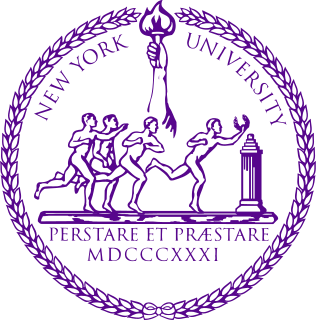
Eamonn Kevin Roche was an Irish-born American Pritzker Prize-winning architect. He has been responsible for the design/master planning for over 200 built projects in both the U.S. and abroad. These projects include eight museums, 38 corporate headquarters, seven research facilities, performing arts centers, theaters, and campus buildings for six universities. In 1967 he created the master plan for the Metropolitan Museum of Art, and henceforth designed all of the new wings and installation of many collections including the recently reopened American and Islamic wings.

The Freer Gallery of Art and the Arthur M. Sackler Gallery form the Smithsonian Institution's national museums of Asian art in the United States. The Freer and Sackler galleries house the largest Asian art research library in the country and contain art from East Asia, South Asia, Southeast Asia, the Islamic world, the ancient Near East, and ancient Egypt, as well as a significant collection of American art. The gallery is located on the south side of the National Mall in Washington, D.C., contiguous with the Sackler Gallery. The museum is open 364 days a year, and is administered by a single staff with the Sackler Gallery. The galleries are among the most visited art museums in the world.

The New York University Institute of Fine Arts is dedicated to graduate teaching and advanced research in the history of art, archaeology and the conservation and technology of works of art. It offers Master of Arts and Doctor of Philosophy degrees in Art History and Archeology, the Advanced Certificate in Conservation of Works of Art, and the Certificate in Curatorial Studies.
Dame Jessica Rawson, is an English art historian, curator and academic administrator, specialising in Chinese art.

The College of Fine and Applied Arts (FAA) is a multi-disciplinary art school at the University of Illinois at Urbana–Champaign.
Tod Williams Billie Tsien Architects are a husband-and-wife architectural firm founded in 1986, based in New York. Tod and Billie began working together in 1977. Their studio focuses on work for institutions: museums, schools, and not-for-profits—organization.

The Alâeddin Mosque is the principal monument on the citadel of Konya, Turkey. The building served as the "Mosque of the Throne" for the Seljuq Sultans of Rum and contains the dynastic mausoleum. It was constructed in stages between the mid-12th and mid-13th centuries. Both the citadel and the mosque bear the name of sultan 'Ala al-Din Kayqubad I.
Alan Balfour is the former dean of the Georgia Tech College of Architecture. He has also held research and/or faculty positions at MIT, Rice University, Architectural Association School of Architecture, and Rensselaer Polytechnic Institute, and was instrumental in establishing the master's degree program in architecture at Georgia Tech.
Laurence Chalfant Stevens Sickman (1907–1988) was an American academic, art historian, sinologist and Director of the Nelson-Atkins Museum of Art in Kansas City.

The Kampaheswarar Temple is a Hindu temple dedicated to the god Shiva. It is situated in the town of Thirubuvanam on the Mayiladuthurai-Kumbakonam road. Shiva is worshipped as "Kampaheswarar" as he removed the quaking of a king who was being haunted by a Brahmarakshasa.
Michael W. Meister is an art historian, archaeologist and architectural historian at the University of Pennsylvania. He is the W. Norman Brown Professor in the Department of History of Art and South Asia Studies, and has served as chair of the Department of South Asia Studies and as the director of the University of Pennsylvania's South Asia Center. In addition, he is Consulting Curator, Asian Section, University of Pennsylvania Museum of Archaeology and Anthropology, and Faculty Curator of the South Asia Art Archive within the Penn Library's South Asia Image Collection.

Deepak Shimkhada is a Nepali American educator, artist, art historian, author and community leader. He currently serves as an adjunct professor at the Claremont School of Theology and Chaffey College. He has previously held visiting and adjunct appointments at several universities in the United States, including Claremont Graduate University, California State University, Northridge and the University of the West. From 1999 to 2011, Shimkhada was a full-time visiting professor of South Asian religions at Claremont McKenna College.

Irving Lavin was an art historian of Late Antique, Medieval, Renaissance, Baroque, and Modern painting, sculpture, and architecture. His wide-ranging contributions centered primarily on the correlation between form and meaning in the visual arts.

The Visualization Sutras are a group of Buddhist meditation texts which contain fantastic visual images and which mostly survive in Chinese translations dating from about the sixth century CE.
Wen C. Fong was a Chinese-American historian of East Asian art. He was Edwards S. Sanford Professor of Art History at Princeton University, where he taught Chinese art history for 45 years. In 1959 he co-founded the first doctoral program in Chinese art and archaeology in the United States, which was later expanded to include Japan. He served as chairman of Princeton's Department of Art and Archaeology, and as consultative chairman for Asian art at the Metropolitan Museum of Art in New York City.




















